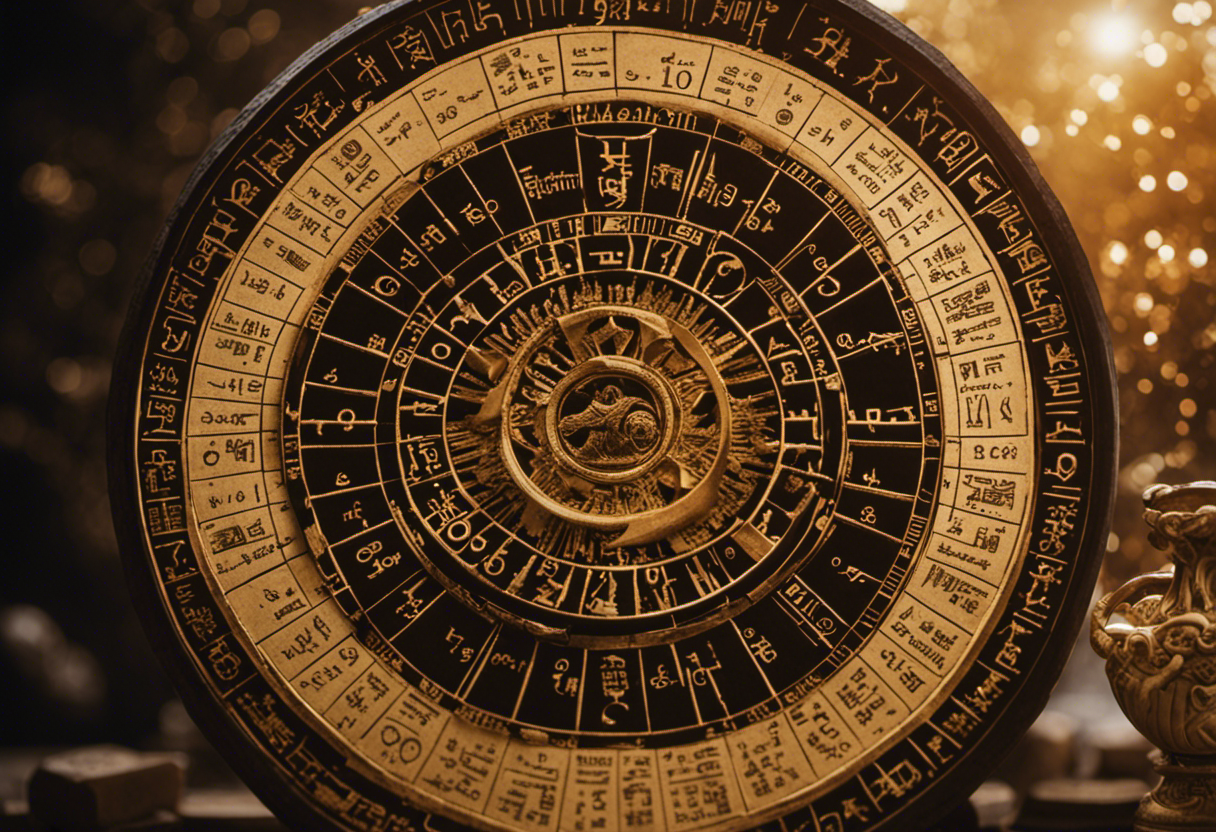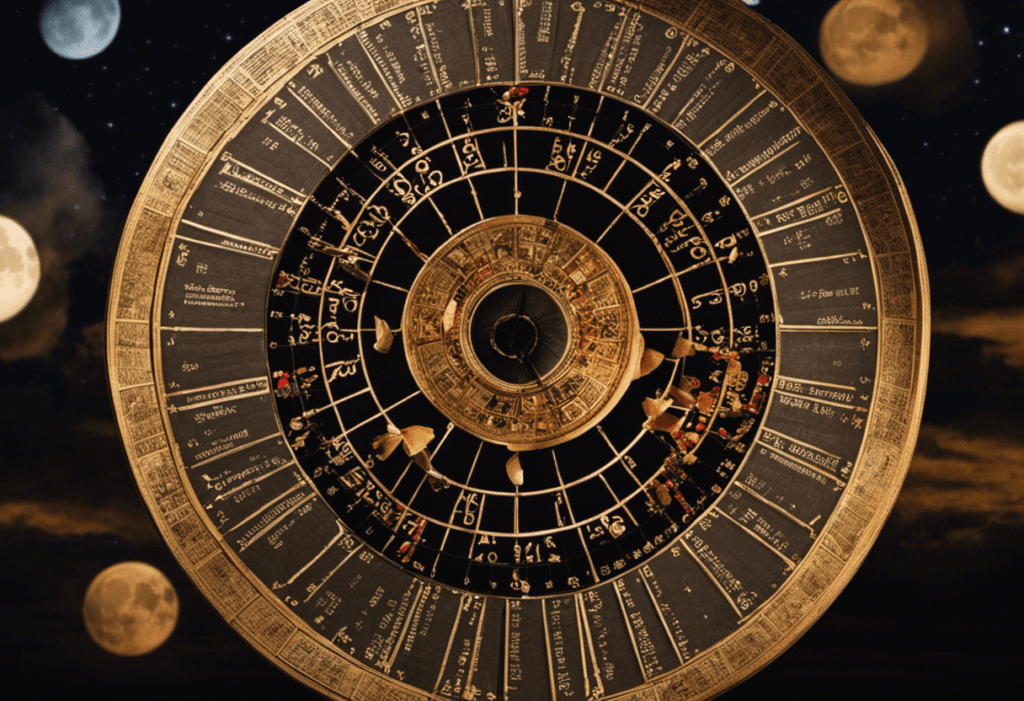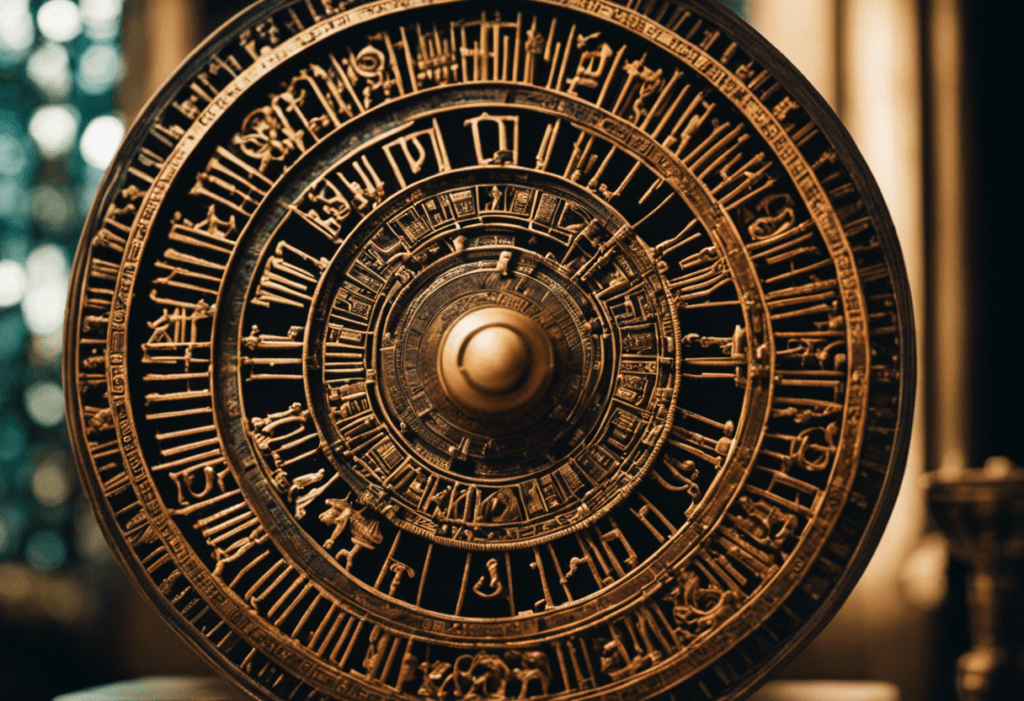In the annals of time, the Babylonian Calendar stands as a testament to the ingenuity and precision of ancient civilizations.
With its unique system of 360 days, this calendar holds a wealth of knowledge and cultural significance.
In this article, we delve into the origins and development of the Babylonian Calendar, explore its structure and components, and examine its lunar cycle and festivals.
Through a comparative analysis, we uncover the enduring legacy and influence of this remarkable calendar.
Key Takeaways
- The Babylonian calendar originated from the Sumerians and was further developed by the Babylonians to align with the solar year by introducing intercalary months.
- The Babylonian calendar was a lunisolar calendar, with lunar months based on the sighting of the new moon and the intercalation of an additional month called ‘Ululu’.
- The lunar cycle was significant in the Babylonian calendar as each day was associated with a specific lunar phase, used for astrological predictions and believed to have an influence on agriculture and human behavior.
- Festivals marked each month of the Babylonian calendar, such as the Akitu Festival, Zagmuk Festival, and Ishtar Festival, providing a connection to religious beliefs and community bonds.
Origin and Development of the Babylonian Calendar


How did the Babylonian calendar evolve and develop over time?
The origin of the Babylonian calendar can be traced back to the ancient Mesopotamian civilization, specifically to the Sumerians who were the earliest known inhabitants of the region. The Sumerians developed a lunar calendar, based on the cycles of the moon, which consisted of 12 months of 29 or 30 days each. However, this calendar did not accurately align with the solar year, resulting in a discrepancy between the calendar and the seasons.
The Babylonians, who succeeded the Sumerians, made significant improvements to the calendar system. They introduced a lunisolar calendar, which incorporated both lunar and solar measurements. This new calendar consisted of 12 lunar months, but to account for the discrepancy with the solar year, an additional intercalary month was added periodically. This adjustment allowed the Babylonian calendar to better synchronize with the seasons.
The Babylonian calendar had a profound cultural impact on the civilization. It was not only used for tracking time and organizing religious festivals, but it also played a crucial role in agriculture, as it helped farmers determine the optimal time for planting and harvesting crops. Additionally, the calendar influenced the development of mathematics and astronomy in Babylon, as the observation of celestial bodies was essential for accurately predicting and adjusting the calendar.
Structure and Components of the Babylonian Calendar


The Babylonian calendar, also known as the Mesopotamian calendar, was a lunisolar calendar used by the ancient Babylonians. It consisted of several key components and followed a specific structure to track time and mark important events.
Key components of the Babylonian calendar:
- Lunar months: The Babylonian calendar was based on a 12-month lunar year, with each month beginning at the first sighting of the new moon.
- Intercalation: To align the lunar calendar with the solar year, the Babylonians added an intercalary month called ‘Ululu’ every few years. This helped them maintain synchronization with the agricultural seasons.
- Week structure: The Babylonians divided the month into four weeks of seven days each, resulting in a 28-day month. Each week consisted of six regular days and one holy day, which was considered a day of rest and worship.
The structure of the Babylonian calendar was intricate and carefully designed to balance lunar and solar cycles. It allowed the Babylonians to organize their religious festivals, agricultural practices, and administrative duties with precision.
Understanding the Babylonian calendar structure and its components provides valuable insights into the ancient civilization’s understanding of time and their cultural practices.
Significance of the Lunar Cycle in the Babylonian Calendar


The significance of the lunar cycle in the Babylonian calendar can be understood through its careful integration of lunar and solar cycles.
The Babylonians recognized the role of lunar phases in determining the passage of time and incorporated them into their calendar system. The lunar cycle, which lasts approximately 29.5 days, played a crucial role in tracking the months within the Babylonian calendar.
The Babylonians divided the lunar cycle into 30 equal parts, known as ‘days,’ and each day was associated with a specific lunar phase. This integration allowed the Babylonians to accurately predict the movement of the moon and its phases throughout the year.
The role of lunar phases in the Babylonian calendar extended beyond simple timekeeping. The Babylonians believed that the different phases of the moon had an influence on various aspects of life, including agriculture, weather patterns, and even human behavior.
They used the lunar phases to make astrological predictions, linking specific lunar phases to favorable or unfavorable conditions. For example, a new moon was associated with new beginnings and the potential for growth, while a full moon was believed to have a heightened influence on emotions and behavior.
Overall, the careful integration of lunar phases into the Babylonian calendar allowed for a more accurate tracking of time and provided a foundation for astrological predictions. This highlights the significance of the lunar cycle and its role within the Babylonian calendar system.
Months and Festivals in the Babylonian Calendar


Within the Babylonian calendar, the months were marked by various festivals that celebrated significant events and deities, providing a rich cultural tapestry of religious observances and communal gatherings. These festivals were an integral part of ancient Mesopotamian society, connecting individuals to their gods and reinforcing social bonds.
Here are three notable Babylonian festivals:
- Akitu Festival: This was the most important festival of the Babylonian calendar, celebrated during the first month. It marked the New Year and the renewal of cosmic order. The festival lasted for 11 days and involved rituals, processions, and the crowning of a new king.
- Zagmuk Festival: This festival took place in the twelfth month and commemorated the victory of the god Marduk over the forces of chaos. It lasted for 12 days and included the reenactment of the epic battle between Marduk and the chaos monster, Tiamat.
- Ishtar Festival: Dedicated to the goddess Ishtar, this festival occurred in the second month and celebrated fertility and love. It involved feasting, music, dancing, and rituals to honor Ishtar as the goddess of love, beauty, and war.
These festivals provided a framework for the Babylonian people to connect with their religious beliefs, strengthen community bonds, and express their cultural identity. They were an essential part of the ancient Mesopotamian calendar and played a significant role in shaping their society.
Comparison of the Babylonian Calendar With Other Ancient Calendars


The Babylonian calendar differed from other ancient calendars in several ways.
Unlike the lunar calendars used by many civilizations, the Babylonians followed a 360-day solar calendar.
Additionally, the Babylonians used a sexagesimal counting system, based on the number 60, which was unique compared to the decimal system used by other cultures.
These differences in counting and tracking time set the Babylonian calendar apart from its ancient counterparts and demonstrate the ingenuity of the Babylonian civilization.
Lunar Vs. Solar Calendars
A significant difference between the Babylonian calendar and other ancient calendars lies in their approach to reconciling the lunar and solar cycles. While many ancient civilizations, such as the Egyptians and Greeks, used lunar calendars that were based solely on the cycles of the moon, the Babylonians took a different approach. They developed a calendar that combined both lunar and solar elements, resulting in a calendar year of 360 days.
The historical relevance of this difference is evident in several ways:
- Agricultural Planning: The Babylonian calendar allowed for better planning of agricultural activities, as it closely aligned with the solar year, which was important for determining planting and harvesting seasons.
- Religious Observances: The combination of lunar and solar elements in the Babylonian calendar also had significance for religious observances, as it enabled the Babylonians to accurately track celestial events and align their religious rituals accordingly.
- Astronomical Observations: The Babylonians were skilled astronomers and the use of a lunar-solar calendar allowed them to make accurate predictions and observations of celestial phenomena, contributing to their advancements in astronomy.
Different Counting Systems
Interestingly, the Babylonian calendar stood out among other ancient calendars due to its unique counting system. While many ancient calendars were based on either lunar or solar cycles, the Babylonian calendar utilized a 360-day year divided into twelve months of thirty days each.
This different numbering system allowed for a consistent and predictable calendar that was not dependent on the cycles of the moon or the sun. The cultural implications of this counting system are significant. The Babylonians were renowned astronomers and mathematicians, and their calendar reflects their advanced understanding of numerical concepts.
This system also had practical benefits, as it facilitated the development of complex mathematical calculations and allowed for easier record-keeping. Overall, the Babylonian calendar’s different numbering system had both cultural and practical implications for the ancient civilization.
Legacy and Influence of the Babylonian Calendar


The Babylonian calendar, with its 360-day year and astrological significance, has had a lasting legacy and influence.
Despite its ancient origins, elements of the Babylonian calendar can still be seen in various global calendars today.
Additionally, the astrological significance of the calendar continues to be studied and utilized in modern astrology, further showcasing its enduring influence.
Global Calendar Adoption
Several countries have already expressed their willingness to consider the adoption of a global calendar system to streamline international trade and communication. This topic has gained traction due to the increasing globalization and interconnectedness of the world.
The potential benefits of a global calendar system include improved coordination and scheduling across different time zones, reduced confusion and errors in international business transactions, and enhanced cultural understanding and cooperation.
However, the global adoption of a new calendar system would also have significant cultural impacts. It would require countries to adjust their traditional calendars and may face resistance from those who are deeply rooted in their cultural practices and beliefs.
Additionally, the implementation process would need to address logistical challenges such as coordinating the transition and ensuring compatibility with existing systems.
Astrological Significance Today
The astrological significance today lies in the legacy and influence of the Babylonian calendar. It continues to shape our understanding of celestial events and their impact on human lives.
The Babylonians developed a calendar based on a 360-day year. It was divided into 12 months of 30 days each, with additional days added as intercalary months. Although this calendar system was not accurate in terms of the solar year, it had a significant impact on astrological predictions and cultural implications.
Astrologers continue to use this ancient calendar as a reference point for their predictions. They interpret celestial events such as planetary alignments and eclipses based on the Babylonian system.
Furthermore, the cultural implications of the Babylonian calendar can still be seen today. It influenced subsequent calendar systems and shaped our perception of time and celestial phenomena.
Conclusion
In conclusion, the Babylonian calendar played a significant role in ancient Mesopotamian society. Its structure and components, based on a 360-day year, reflected the importance of the lunar cycle in their religious and agricultural practices.
The calendar’s influence can be seen in its similarities to other ancient calendars, showcasing the enduring legacy of Babylonian civilization. Its systematic approach to timekeeping laid the foundation for future calendar systems and continues to shape our understanding of ancient civilizations.



